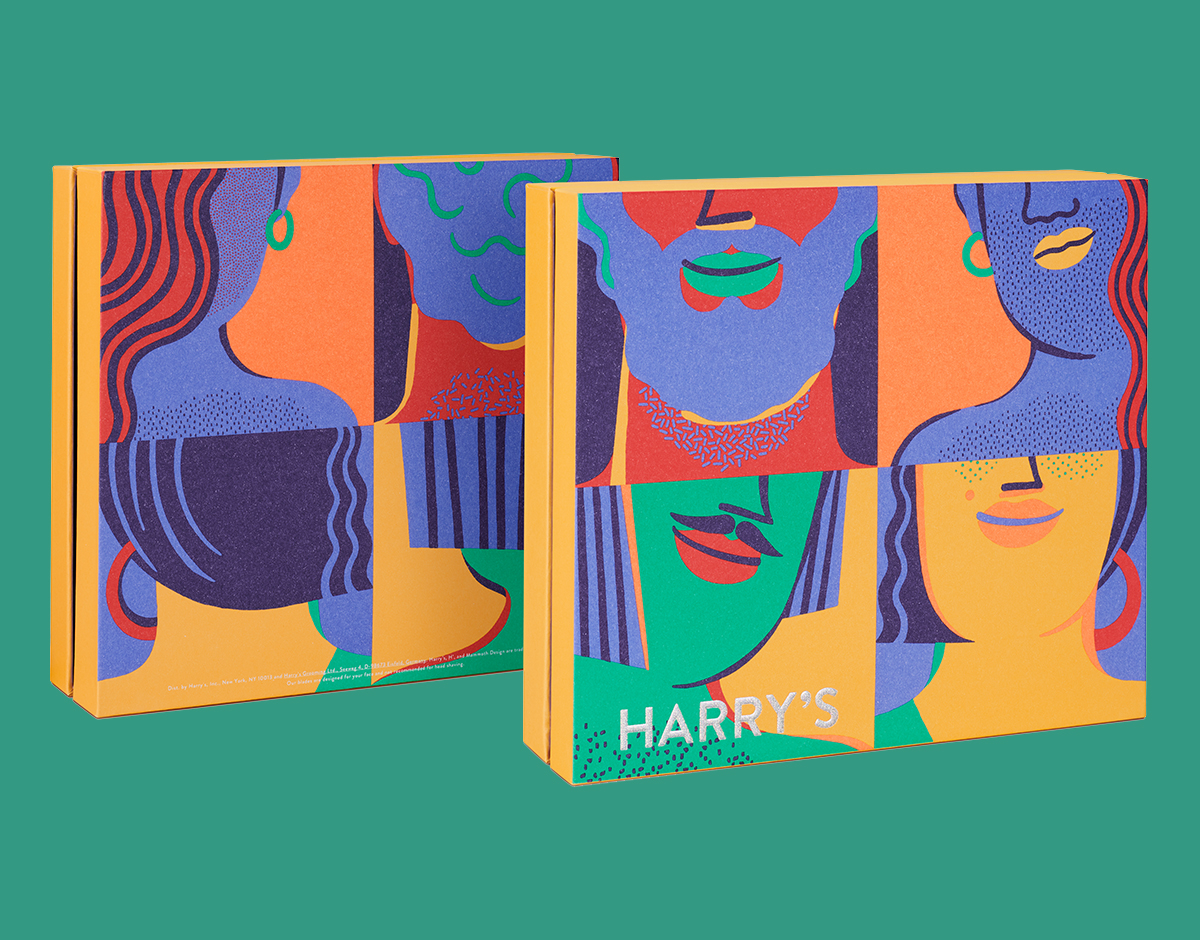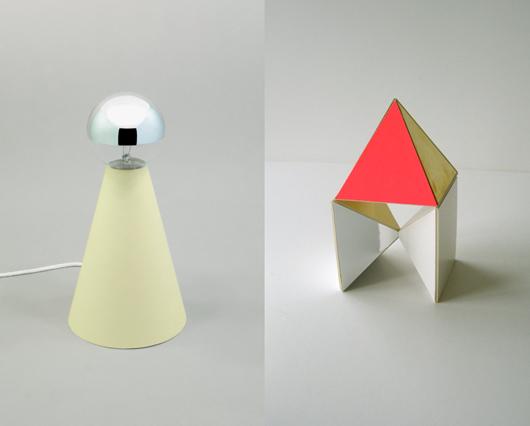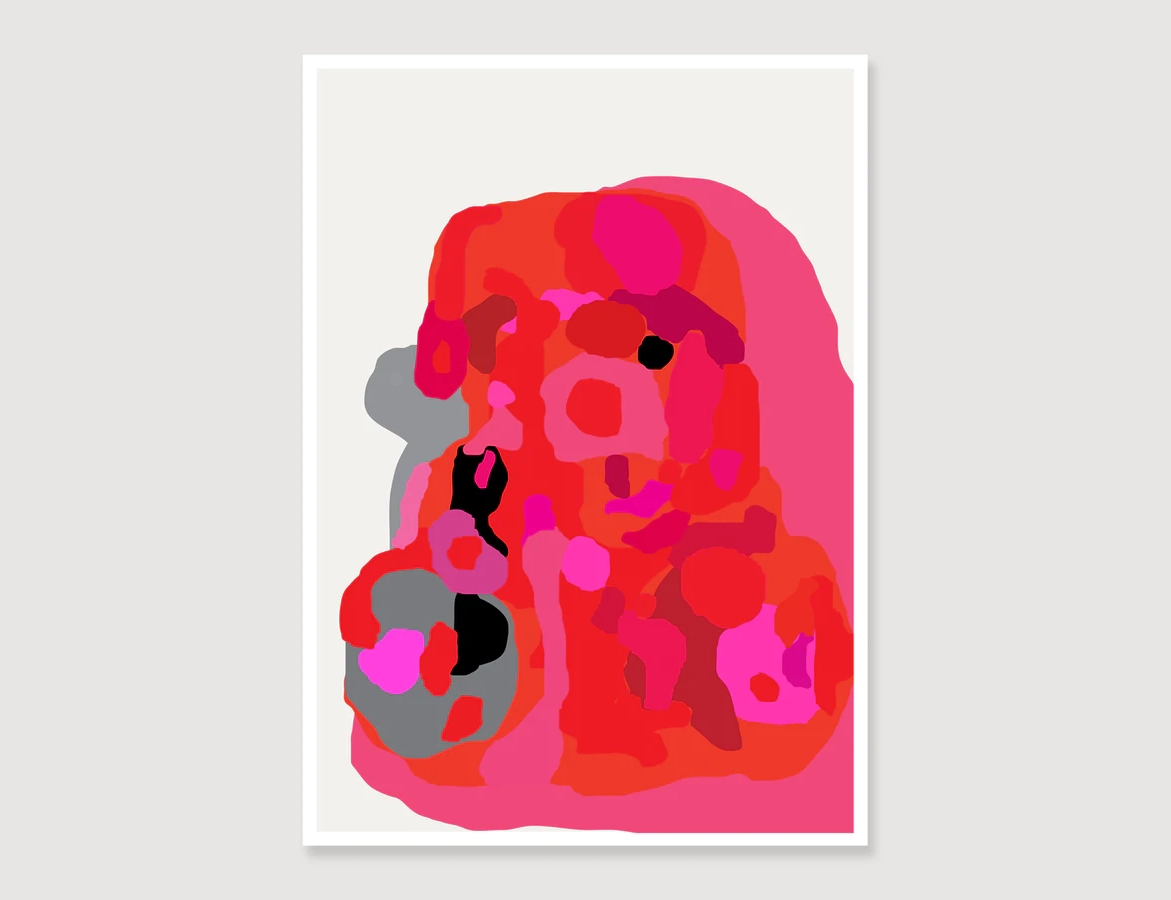
03.21.22
Excerpt: Book
“Why Design Matters” is Only the Tip of the Iceberg in This Expansive Book of Interviews by Debbie Millman
If you’ve ever thought about starting a podcast — a design podcast, sure, but really one on any topic at all — you probably have Debbie Millman to thank for that. Millman, who started the phenomenally popular Design Matters way back in 2005, was one of the first people working in the medium — and, as I was reminded when flipping through her new book Why Design Matters, which brings together more than 50 conversations from the show’s past, remains one of the best. For those who might not know, Millman built her career at the company she founded, Sterling Brands, which had huge accounts and did mass-market work like creating the illustrated bubbles on a new identity for 7UP, or creating a hand-drawn typeface for Twizzlers. “After nearly a decade at Sterling, I began to wonder if I had lost my creative soul or, at the very least, abandoned it to my professional ambition. Or, perhaps, it is more accurate to say I finally got to a place where I was willing to stare down a fear that had been hovering at the periphery for years,” Millman writes in the book. Enter Design Matters, which started as a tiny show on a fledgling radio network and grew to be a juggernaut, featuring design luminaries like I ♥︎ NY designer Milton Glaser, proto-podcast icon Ira Glass, and artists like Marilyn Minter and Amy Sherald.
There still aren’t that many design podcasts out there, and part of the reason this one works where others don’t is its ongoing star power. But it’s also a meticulously researched show, and it uses design only as a jumping-off point for more expansive conversations about growing up, changing, and building something real in this life. We’re excerpting one of our favorite interviews from the book, with the filmmaker, graphic designer and artist Mike Mills, here today.
MIKE MILLS | Original Air Date: November 27, 2017
Mike Mills has done so many different types of work it’s hard to imagine how it all comes from the same person. As a graphic artist, he’s designed album covers for Sonic Youth and the Beastie Boys. He’s also designed scarves and skateboards. He’s created music videos for Yoko Ono, Moby, and Pulp, and commercials for Nike and Old Spice. His artwork has appeared in museums in the U.S. and Europe. His featured movies include Thumbsucker, Beginners, and his Oscar-nominated film, 20th Century Women. Mike joined me to talk about his extraordinary career and what it is that all his various creative endeavors might have in common.
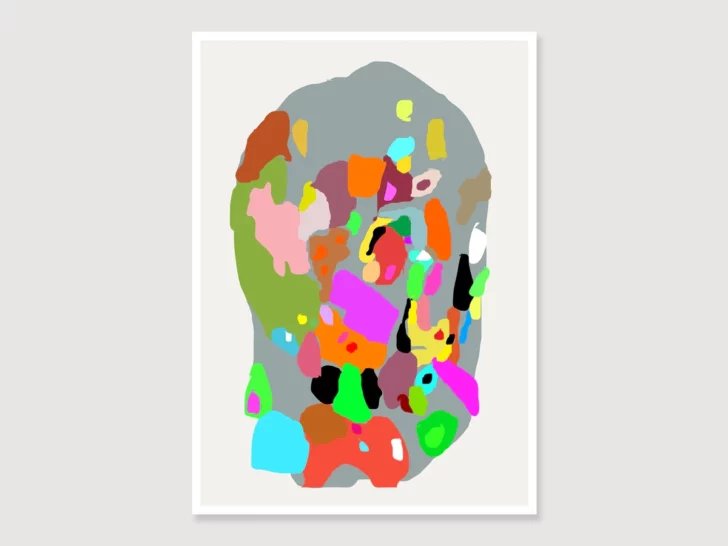

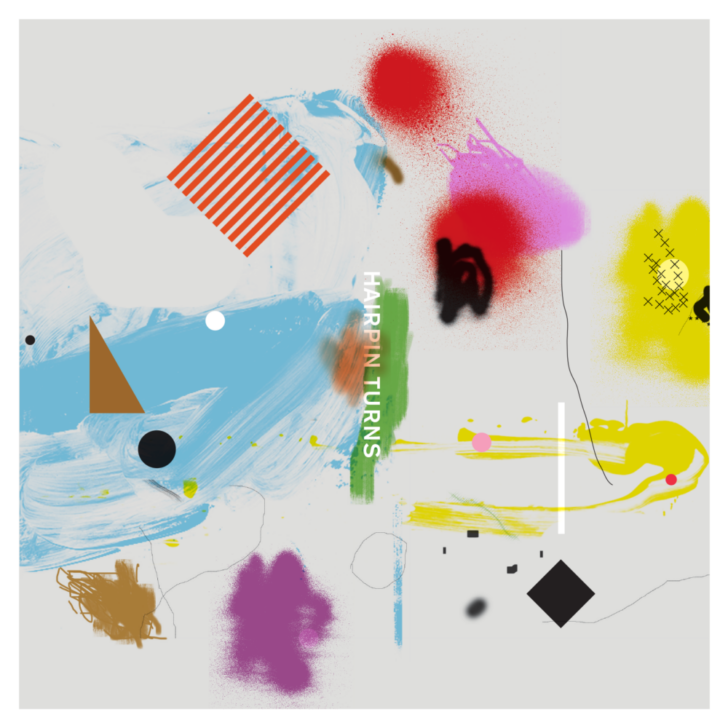
Debbie: Mike, you were born in Berkeley, California. Your father was an art historian and museum director, and your mother was a draftsperson who looked like Amelia Earhart and wanted to be a pilot in World War II. Would you say your home was a creative environment?
Mike: Creative and highly entrepreneurial. More than anything, my parents were Depression-era kids. They were born in the ’20s. When they turned 18, the draft for World War II started. My mom wanted to be an architect. She wanted to be a pilot in World War II. Back then, that was not allowed. She was the only woman in the drafting room in the early ’40s. My dad was shipped off to the Aleutian Islands, where he was a gay man doing Morse codes for four years in a Quonset hut with a bunch of men.
Debbie: Sounds a little Alan Turing-esque.
Mike: If my parents were here, they would say that America was different then. America was more bohemian. America was more socialist. My mother’s always saying, “All the characters are dying. Go talk to Mary Steele over there at the dinner party. She’s a true weirdo.” My parents had that weirdness to them, even though my dad wore a suit every day. They were very hardworking people, not typically arty. They were deeply bohemian, and from an older, weirder America.
Debbie: Your parents got married in 1955. They were married for 45 years. You’ve said that your mother knew your father was gay. Your father knew he was gay. Growing up, did you know your father was gay?
Mike: When I was 18, my older sister mentioned something about it. Anybody who has deep family secrets or open secrets will know that you’re both shocked and totally not shocked. As an 18-year-old Santa Barbara boy in the ’80s, I thought, “He was gay and now he’s not anymore.” It was a convenient story. He didn’t seem gay at all. He voted for Reagan. He wore a suit and tie every day. Sex just seemed completely devoid from this person.
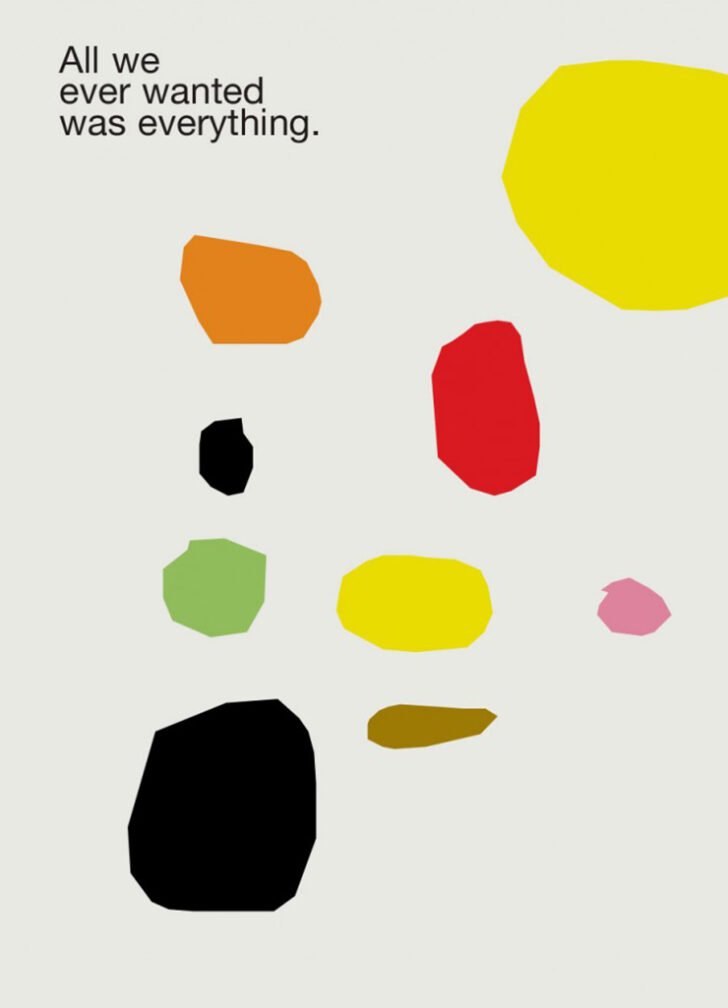
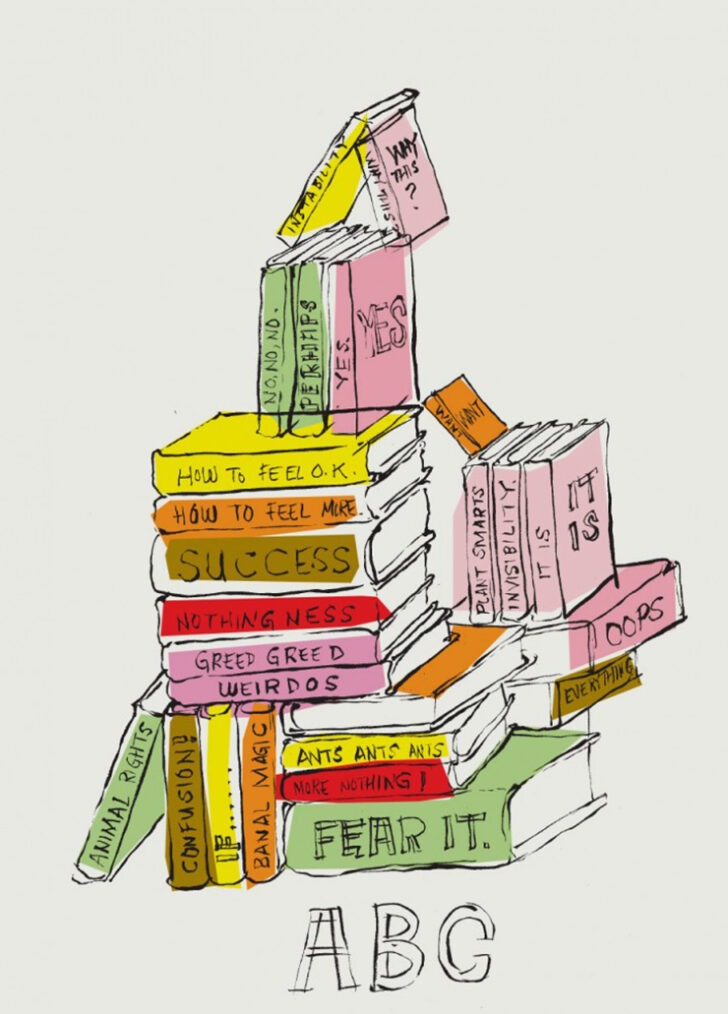
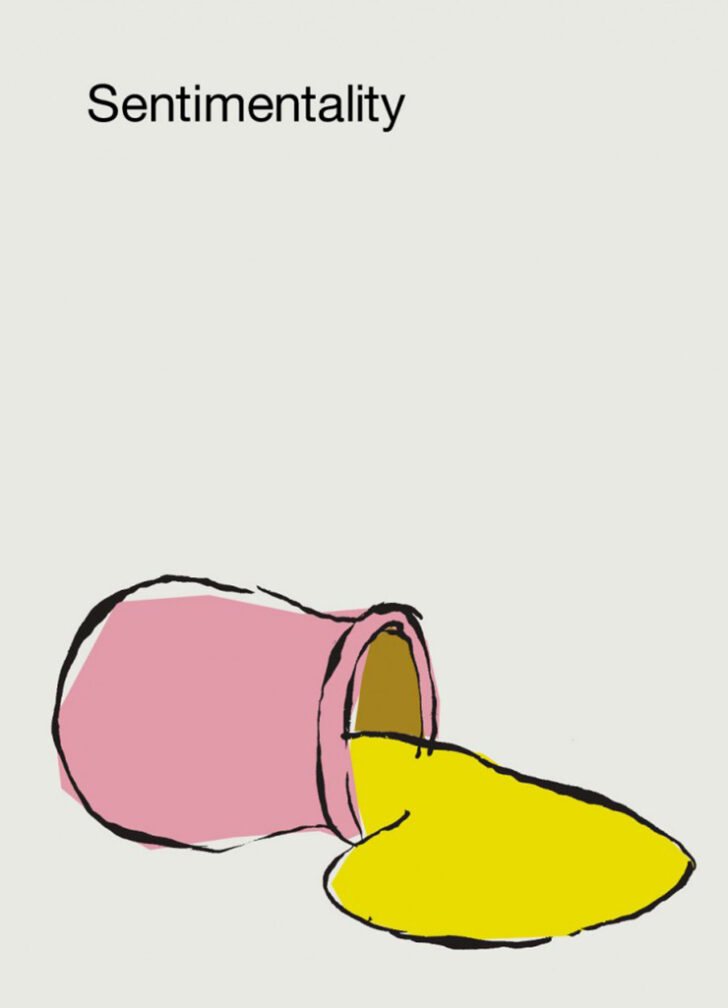
Debbie: Your parents conceived you when they were 40, many years after your sisters were born. You’ve stated that you were the product of their recreational sex. They must have loved each other.
Mike: They were complicated. They definitely loved each other — they knew each other since junior high. I’m not sure how much joy permeated their relationship. There was no heat in the house. There was darkness and unresolved things. You have to contextualize it in their time. No one from their generation did what they wanted to do, or very few did. Self-sacrifice is interwoven with everything. My mom was equally complicated in different, mysterious ways.
Debbie: You said that she was a combination of Amelia Earhart and Humphrey Bogart—that sounds very butchy.
Mike: She was very butch and hard drinking, hard smoking. I have memories of her with a sandbag over her shoulder, nailing up a two-by-four. All the gender stuff in my family was very fluid. They were interesting people. They had overcome so much, more than I ever had to. They had this incredible work ethic and postwar American mission to be part of a community — they lived the belief that you have the social responsibility to develop a community, participate in it, and make things better so that the world will get better. My dad was a museum director at the Oakland Museum of Art and the Santa Barbara Museum of Art, so he had a dinner party maybe every week with guests like Ed Ruscha and Richard Diebenkorn. The dinner parties were 20 to 100 people, so the house was a community center.
Debbie: Salons, right?
Mike: Salons makes it sound a little more romantic than it was. Santa Barbara in the ’70s was a drunken, weird intersection of a whole bunch of different kinds of people. The art world back then was more heterogenous than it is now. My parents were hosts to parties both in their house and metaphorically, in life. That’s how I treat directing; I’ve invited you all to this get-together. I am the host. I take a lot of cues from my parents’ generosity and how contagious that is. In a weird way, the biggest influence on my work was their dinner parties.
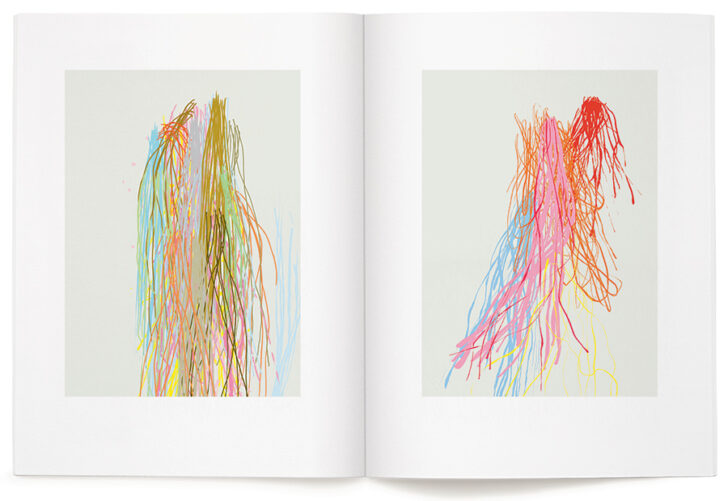
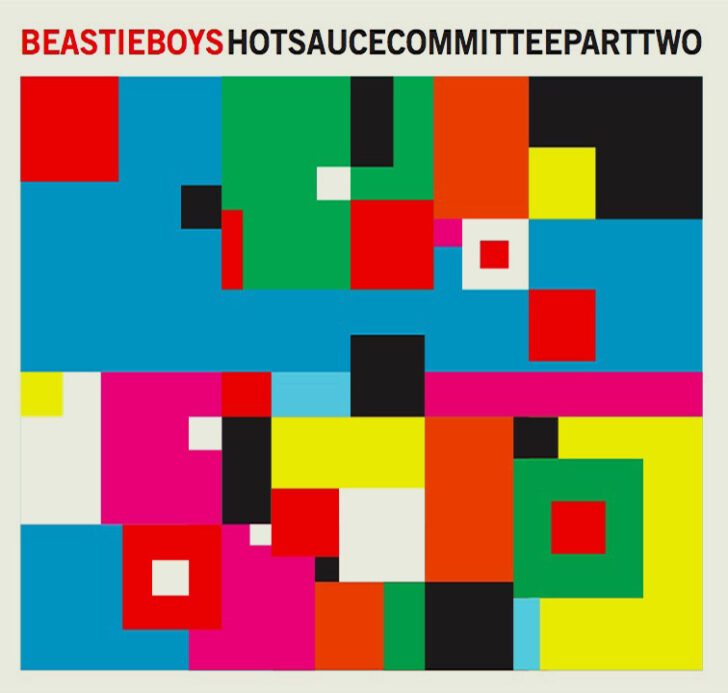

Debbie: After high school., you followed your sister Megan to New York City in 1984 to attend Cooper Union, where you started to think that the art world was too rarefied. Was that why you chose design?
Mike: Totally. I started at Cooper in 1984, which at that time was defined by the whole SoHo, Mary Boone world. I’m doing Sean Scully wood prints and my friends are breaking Julian Schnabel plates. We all have front seat exposure to the art world but we’re punky, entitled 19- or 20 year-olds and very critical of it all. That gallery world is a fucked-up version of art — making toys for wealthy people. I was highly influenced by Hans Haacke and Ellen Lupton, and people who are involved in a more socially conscious understanding of what your practice was and how it was interacting with the world. When I started to do conceptual art sculptures, I migrated to the design floor because I needed to set some type, and I thought, “Huh, these people — they wear nice clothes.” They weren’t dressed like all of us on the sculpture floor. We were just dirty, sawdust-ridden monsters.
Debbie: You’ve described being nervous around designers that you did all this amazing work for, like Tibor Kalman. I also read that you were nervous and self-conscious around Kim Gordon and Mike D when you were doing projects for Sonic Youth and the Beastie Boys. How did you get over this nerdy self-consciousness?
Mike: I’m not self-conscious in the work. The work is where I could always be free and somewhat myself. I can get nervous around anybody. The work was always a place where I could be bigger or braver than I am. Tibor could be a very intimidating person, and he was not an easy person to work for. He was very hard on all of us. He never let you draw a sketch bigger than a quarter. He wanted a ton of ideas. He didn’t want you to get involved in the aesthetics of your idea very much and work it out. He wanted lots of quarter-size ideas on a page.
Debbie: You’ve said that you feel you have the best shot at making a good movie if you work from a world that you’ve closely observed, things that you truly love, and things that truly confuse you. Why the confusion part?
Mike: That’s the most important part, in a way, because you need to have a live question or something that you have to desperately heal or understand more. The questions that are gnawing at you and tearing you apart — that’s great film material. That’s going to keep you charged all the way through. It’s going to have a certain electricity. I love Allen Ginsberg’s “Howl” because it has that desperate sense that he has to write it to be sane.
Debbie: Your first feature film, Thumbsucker, came out in 2005. It starred Vincent D’Onofrio, Tilda Swinton, and Vince Vaughn. It’s based on Walter Kirn’s novel about an adolescent boy’s mutiny against his family. You wrote a script. You raised $4 million to make it. I read that you aspired to the simplicity of Yasujiro Ozu, the Japanese filmmaker who placed his camera at only two levels, sitting height and standing height.
Mike: If you’re starting as a filmmaker, that’s a great model because it takes out a million questions. Lenses and what they do to faces and to the emotions of a scene, that’s such a complicated craft. As a 51-year-old, I’m only now understanding how a 75mm lens changes a scene compared to a 35mm. A 35mm is basically what your eye sees. I learned that subconsciously through Jim Jarmusch, who is a huge Ozu fan. His films have that observational, plop-down camera quality. Again, this is very much soothing to me. There’s no virtuosic envelopment to it. It’s like a documentary photograph, in a way.
Debbie: The movie you did after Thumbsucker was about Japanese depression. How much does depression figure in your work?
Mike: Depression is something that’s in my family that you can’t talk about, that you inherit, that you take on as a child, but it’s illegal to speak. You spend the rest of your life trying to have a space where you can feel it and not be shamed for having the feeling, where you can hold the feeling without drowning in it. So much of my art and Thumbsucker, in particular, is about a place to have your shame, to have your vulnerability and survive. I’m attracted to art that does that.
Debbie: Do you still experience a lot of shame?
Mike: Sure, but less and less. Years and years of therapy have expunged that, as well as being an adult and being married and having a kid, but it’s the background.
Debbie: Your wife — the artist, writer, and filmmaker Miranda July — said, “Making things is what you do to comfort yourself if you feel an inborn loneliness that won’t go away.” Do you agree?
Mike: Oh, yeah. We both share that dynamic. The mirroring that we wanted from the family just didn’t work out. There are certain artists you meet and they’re the chipperest people, but all their songs are like Leonard Cohen’s. Their creativity is a place where their depression, where their unknown mystery of that which is not happiness, resides. Whenever you make anything, any drawing, any book, any movie, you go into that river. It’s not always a negative.
Debbie: Beginners is loosely based on your own relationship with your father. The movie starred Ewan McGregor as a graphic designer whose 75-year-old father, played by Christopher Plummer, has just come out. He wants to experience the gay life he denied himself when he was married. When you were scripting Beginners, you wrote on an index card the words, “This has already happened to everybody all the time.” Why?
Mike: That story’s totally based on my life. It’s creative nonfiction. When my dad died, that was my second parent dying. That’s quite intense and sad and a huge milestone. My dad’s coming out and having five gay years but not having as much as he wanted — and dying wanting to eat more of the peach — you can get precious about all that. Even the experience of your parents dying — you can feel like it’s an individual experience and become precious about it. I wanted to invoke the blues. These are things that happen to all of us, all the time, everywhere. Everything in that movie came from the real world, down to the dog. I wanted to put it into a fire and release it to the world. That’s what making a film about it is doing. I also had Fellini in my head for both those movies. His stories come from a very personal space but he’s saying it to all these strangers in a dark room. He treats it like a lyrical myth and he understands the connection between the two things.
Debbie: You’ve said that your father coming out was actually a gesture of him saying, “I want life. I want something.” When this very polite, quiet man came out, it was the beginning of him becoming more vivid and hot and present, which was often messy but always wonderful. That must have been incredible to witness.
Mike: He was also a vain, egotistical museum director, so it’s not like he was so shy and everything that entails, but he was shy. He didn’t do what he wanted to do for so long on a deep, deep level. To see him become an adolescent late in life, after my mom was gone, was often very difficult because he was not boundaried and not good to my sisters and me. But it was beautiful to see him very in love, in an obsessed way.
Debbie: Your film 20th Century Women is set in Santa Barbara in the late ’70s and stars Annette Bening as a 55-year-old single woman raising her teenage son Jamie in a boarding house full of wonderful misfits. The film is autobiographical, a way to try and understand your mother. In making the film, you stated that as a heterosexual cisgender guy talking about women, you were worried and wanted to find where your limitations were and make them part of the piece. Do you feel like you did that?
Mike: It’s something that I have thought about a lot and that has often stopped me. Abbie’s character is based closely on my sister, and luckily my sister was very generous. I interviewed her, and interviewed her, and interviewed her. I also grew up in a family with a very strong mom, two very strong older sisters, and a closeted gay dad who’s not the patriarch of the family. I lived in a matriarchy, and I’m used to trying to figure out women to survive, to not be in trouble, to get what I want. Then as an adult, making a movie in a public sphere, I thought, “Holy crap. What am I doing and how am I going to do this?”
Debbie: You end the movie by saying that you’ll never be able to explain your mom to your son. I believe your son is now four years old.
Mike: He’s five now. I definitely made the movie for him in some ways.
Debbie: What part of you made it for him?
Mike: As a maker of something that takes that long — five, six years — there are so many times where it can fall apart, where you’re desperate. It’s brutal. During those moments of collapse, it comes out: I’m doing it to be alive. This is how I communicate with people in a real way. I’m doing it to be a part of the world. I’m doing it because I feel like I know these people, my mother and my sister. If I have feet on this Earth, it’s because of them and because I’ve seen them, so maybe I can make a movie about that, and maybe I can exist on this Earth and tell that to Hopper, my son.
Debbie: You’ve described your work as overly sweet and earnest. You’ve said, “I’m trying so hard to be nice. At times I just feel like, ‘Let’s do something nasty, Mike, with some evil people. Let’s fuck some shit up.’” Do you have any plans to do something nasty?
Mike: I wish I could. I do feel like it is too sweet sometimes, but to do those other things isn’t my predicament. My predicament is this vulnerable Swede trying to be kind and generous. There’s a Milan Kundera quote that I love. He’s talking about kitsch, which is basically sentimentality. In art and in life, kitsch is this metaphysical teleprompter that asks us to look in the mirror and fall in love with what we see there. It blinds us from knowing what we have lived. There is a sweetness that does block some complexity, and honeys some experiences that shouldn’t be honeyed. In my attempt to see my life, I want to get out of that, but my creativity, my world, my vibe comes from this kind place that’s sometimes embarrassing, and that’s what it is.

